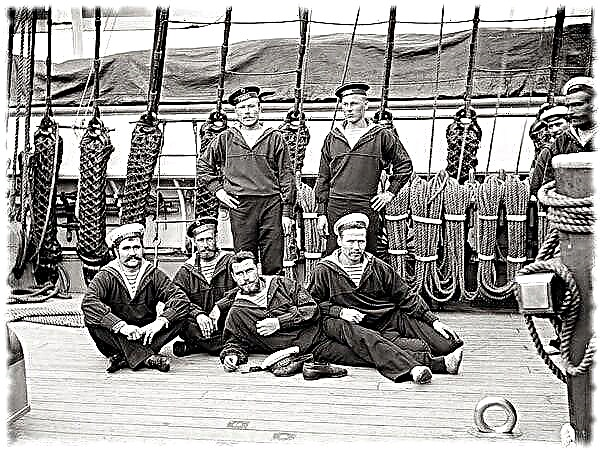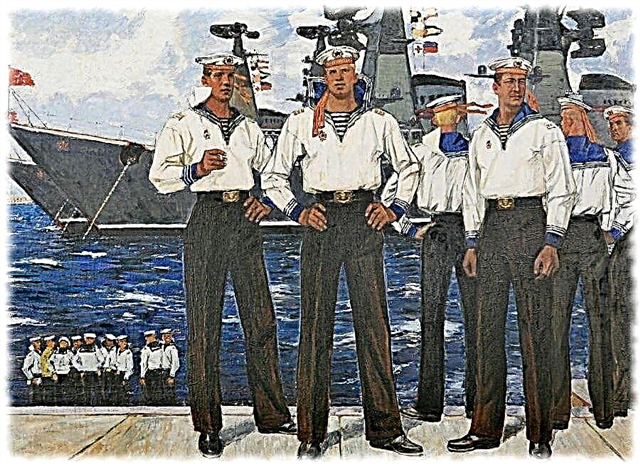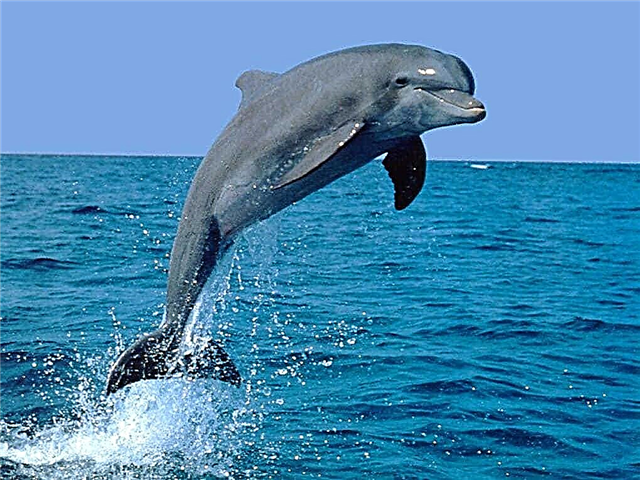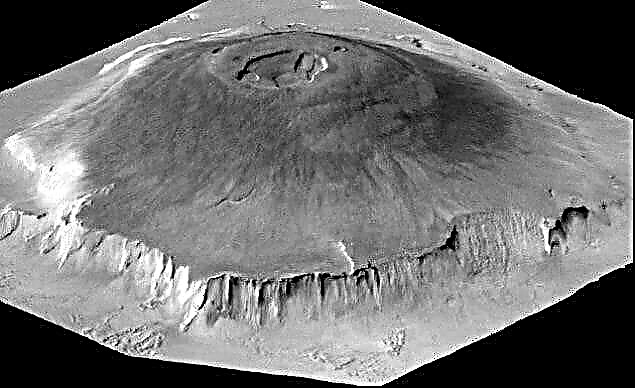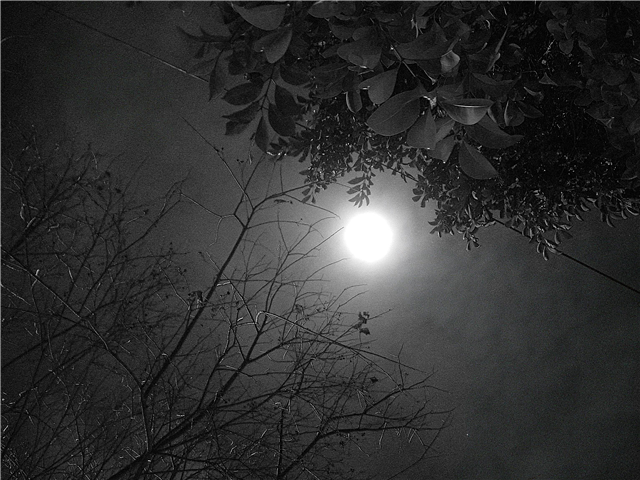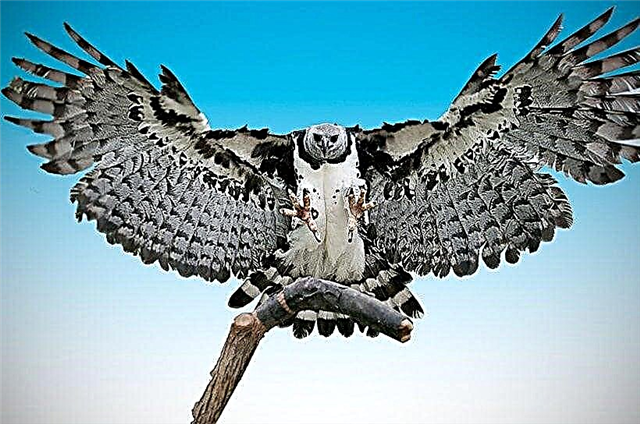
Twelve seas, as well as one sea-lake wash the territory of Russia. This figure is 2.4% of the total ocean area. The seas are distinguished by a diverse geological structure.
What is the ocean - definition
The ocean is the largest water body that is part of the oceans, is located among the continents, has a water circulation system and is in constant interaction with the earth's crust and atmosphere. The area is about 361 million km² (approximately 71% of the Earth’s area).

What is the sea, how is the sea different from the ocean?
The sea is part of the oceans, which is separated from it by land or elevations of the underwater relief. The waters of the seas and oceans differ in composition, salt level. There are also differences in the organic world, bottom topography, depth.
In the sea there are other climatic and meteorological regimes due to the proximity of land. The longer the territory of the sea with land, the more it differs from the ocean.

The length of the sea borders of Russia
The sea borders of Russia are established along the external border of territorial waters (at a distance of 22.2 m from land) or from existing inland sea waters. The length of the state border is 60 932 km and more than 38 807 km of them are sea borders.

The length of the coastline of Russia
The length of the coastline is slightly different from the border. This is the line along which land and water surface intersect. Therefore, it includes all sorts of kinks, and the border is a straight line. Since the water level is constantly changing, the coastline is a conditional concept and is taken on the basis of average indicators.

The length of the coastline of the seas of Russia is 60985 km. These include the following coasts:
- Arctic Ocean - 39,940 km;
- Pacific Ocean - 17 740 km;
- Caspian Sea - 1460 km;
- Black Sea - 1185 km;
- Baltic Sea - 660 km.
Atlantic Ocean
The waters of the Atlantic Ocean, which wash the western part of Russia, include the Black, Baltic and Azov Seas. The total length of the coastline is approximately 1845 km. Among the largest rivers that flow into these seas, it is worth highlighting the Don, Neva, Luga, Matsestu and Asha.

Interesting fact: The waters of the Atlantic Ocean have a higher salt content than other oceans.
Arctic Ocean
The waters of the Arctic Ocean wash the northern coast of the country. The coastline is 39,940 km. The list of seas in this basin:
- Chukchi
- Barentsovo;
- White
- Kara;
- Laptevih sea;
- East Siberian.

The largest rivers include the Yenisei, Lena, Ob, Pechora and the Northern Dvina.
Pacific Ocean
In the east, our country is washed by the waters of the Pacific Ocean. The coastline is 17,740 km. The Okhotsk, Bering and Sea of Japan belong to the Pacific Ocean basin. The largest rivers are Anidar and Amur.

In addition to the above 12 seas, the territory is washed by the waters of the Caspian Sea, which is closed and can actually be called a lake. The seas of the state are very diverse in terms of origin, depth, bottom topography, and salinity. All kinds of flora and fauna are also observed.
The seas of the Atlantic Ocean that wash Russia
Sea of Azov
The Sea of Azov, located in the south-west of Russia, belongs to the semi-enclosed category. It is recognized as the smallest in the world, as well as the most continental (in remoteness from the ocean).

Characteristics:
- average depth - 7.4 m;
- maximum depth - 13.5 m;
- surface area - 37,800 km²;
- coastline - 1472 m;
- maximum length - 380 km;
- the maximum width is 200 km.
Being a shallow body of water, the Sea of Azov is characterized by a variable temperature regime, which depends on the time of year.In summer, the water warms up well, in winter it freezes (partially or completely).
In terms of salinity, water is 3 times inferior to other seas and oceans. There is a large number of phytoplankton, bottom organisms, mollusks, and a variety of fish. The sea holds a leading position in terms of the number of animal organisms and vegetation worldwide.
Interesting fact: in the Sea of Azov there lives the only marine mammal - an ordinary porpoise or an Azov dolphin.
Black Sea
The sea of the internal type is located far from the ocean, in the southwestern part of the country, and is connected with it through a chain of narrow straits. It has an important transport, strategic, military significance. A characteristic feature of the Black Sea is a high level of hydrogen sulfide at a depth of a couple of hundred meters. In this regard, there is an almost complete absence of living organisms.

Characteristics:
- average depth - 1240 m;
- maximum depth - 2210 m;
- surface area - 422,000 km²;
- coastline - 3400 km;
- maximum length - 1150 km;
- the maximum width is 580 km.
The salinity of the surface water layer is 18 ppm (low), and the temperature is notable for significant fluctuations. Near the coast in winter the water can freeze, and in summer its temperature here sometimes reaches 30 ℃. The climate is mostly continental. There is a variety of algae. Compared to other seas, the fauna is much poorer.
Baltic Sea
The Baltic Sea is one of the inland continents and washes the territory of the Russian Federation in the northwest. Moreover, it has a low salt content and belongs to the brackish-water, being the largest sea in this category.

Characteristics:
- average depth - 51 m;
- maximum depth - 470 m;
- surface area - 419,000 km²;
- coastline - 8000 km;
- maximum length - 1,500 km;
- maximum width - 360 km.
The sea is notable for its diverse bottom and depth, as it is located on the continental shelf. Several rivers flow into it, therefore, the salinity of the water is low. In cold time it freezes, in some areas there are motionless layers of ice. In summer, the temperature of the surface layer can reach 17 ℃.
The Baltic Sea served as a place for the disposal of chemical weapons after the Second World War; therefore, an unstable environmental situation is observed here. The waters are rich in seafood.
Seas of the Arctic Ocean that wash Russia
Barents Sea
The Barents Sea is located in the north of the state. Its borders are partly arbitrary, since it belongs to a group of marginal seas, which freely adjoin the ocean. The sea is important in fishing and transport.

Characteristics:
- average depth - 222 m;
- maximum depth - 600 m;
- surface area - 1,424,000 km²;
- coastline - 6645 km.
The Barents Sea has a fairly high salt content - up to 35 ppm. Its climatic conditions are affected by the Arctic and Atlantic oceans. Weather conditions are characterized by variability under the influence of arctic air and warm cyclones.
The sea is characterized by a rich variety of vegetation, plankton, fish. Common are polar bears, seals, beluga whales and other mammals.
White Sea
The inland White Sea is located in the northern part of Russia. After the Sea of Azov, it is considered one of the smallest seas washing the country's territory. It features a florid shape and many small islands.

Characteristics:
- average depth - 67 m;
- maximum depth - 343 m;
- surface area - 90 800 km²;
- coastline - about 2000 km;
- the maximum length is 600 km.
Hydrology is influenced by the Barents Sea. Despite its small size, it is characterized by frequent storms with waves up to 6 m. For six months it is in a frozen state. In the warm period, the central part of the sea can warm up to 17 ℃. The salinity of the surface layers is relatively low - up to 26 ppm.
Interesting fact: the winds of the White Sea have unique names depending on the direction - siverko (C), midday (S), silkworm (SW), afternoon (SE), midnight (NE), and depth (NW).
The White Sea is involved in the fishing industry. However, the diversity of marine life here is small due to insufficient salinity and difficult climate.
Kara Sea
The Kara Sea of the marginal type washes the northern part of the country, namely, the islands and archipelagos located here. It is one of the coldest seas in Russia and is frozen throughout the year.

Characteristics:
- average depth - 50-100 m;
- maximum depth - 620 m;
- surface area - 893,400 km²;
- coastline - 1500 km.
The salinity of the water is about 34 ppm. It is noteworthy that the Kara Sea is almost entirely located on the shelf. But here there are two gutters - Voronin and St. Anne. Water with a higher temperature penetrates from the Barents Sea. In summer, the temperature does not rise above 6 ℃.
In the east is the Great Arctic Reserve. Most of the environmental problems of the Kara Sea are associated with the pollution of river waters that flow into it. Also in the XX century, a large amount of nuclear waste was buried here.
In terms of flora and fauna, the sea is rich in algae, as well as fish - flounder, saffron cod, smelt. Some representatives of cetaceans are found.
Laptevih sea
The Laptev Sea of the marginal type is located in the northern part of the state. It is characterized by difficult climatic conditions due to its location near the Arctic Circle. Most of the year, the water temperature is less than 0 ℃, so the surface is covered with ice. Also, the sea is characterized by a low level of salinity, a small variety of vegetation and wildlife.
Interesting fact: The sea is named after Khariton and Dmitry Laptev. These are cousins who did polar research. Until 1935, it had a different name - the Nordensköld Sea (in honor of the Swedish geologist, geographer and navigator).

Characteristics:
- average depth - 540 m;
- maximum depth - 3385 m;
- surface area - 672,000 km²;
- coastline - 1300 km.
Marine life is represented by plankton, various algae. Some species of mammals are found - seals, walruses, beluga whales. Mollusks and sea urchins live near the coast. In the industrial sphere, the Laptev Sea is not involved.
East-Siberian Sea
The outlying East Siberian Sea washes the territory of our country from the northeast side. It is characterized by strong differences in salinity levels - from 5 to 30 ppm. There are several bays as well as large islands.

Characteristics:
- average depth - 66 m;
- maximum depth - 915 m;
- surface area - 944 600 km²;
- coastline - more than 3,000 km.
The East Siberian Sea is located on the shelf. Almost throughout the year it is in a frozen state. Thick layers of ice can be found even in summer (in the eastern part). The average annual temperature is about -1.8 ℃. The maximum value in summer reaches 7 ℃.
The sea is characterized by a variety of mammals (polar bears, walruses, seals, whales), fish (cod, saffron cod, grayling) and birds (geese, gulls, ducks).
Chukchi Sea
The Chukchi Sea divides Russia and Alaska in the north. It is also included in the marginal category. It received its official name only in 1935. Previously, the sea was considered part of the East Siberian. But the researchers identified some differences in natural conditions. It is worth noting the weak indentation of the coastline, as well as many lagoons off the coast.

Characteristics:
- average depth - 71 m;
- maximum depth - 1256 m;
- surface area - 595,000 km².
Interesting fact: The Chukchi Sea crosses the date line - a conditional line that runs from the North to the South Pole. On different sides of the line, the clock shows almost the same time, but different dates with a day shift.
The hydrological regime of the sea is affected by the warm currents of the Pacific Ocean, as well as cold Arctic waters. In addition, floating ice comes here, and the climate is particularly severe. The water temperature in summer does not exceed 12 ℃, in winter it ranges from -1.7 ℃.
The level of salinity of the Chukchi Sea is also changing. In winter, it is higher - about 32 ppm. In the summer below - 29 ppm. In places where rivers flow into the sea, salinity is much lower - up to 5 ppm.
In the territory of the Chukchi Sea, polar bears, whales, seals, walruses are found. Among the fish, cod, char, and navaga are common. In summer, seabirds nest on the coasts in large numbers.
Seas of the Pacific Ocean that wash Russia
Bering Sea
The outlying Bering Sea is located in the east of the Russian Federation. Previously, it was called Bobrov or Kamchatsky. The sea is separated from the Pacific Ocean by a chain of small islands that together form a huge curved arc.

Characteristics:
- average depth - 1600 m;
- maximum depth - 4151 m;
- surface area - 2,315,000 km²;
- coastline - 13,340 km;
- maximum length - 2400 km;
- maximum width - 1600 km.
The Bering Sea is quite large and deep, so the temperature regime and its other physical and geographical properties vary. So, on the surface the temperature in summer does not exceed 10 ℃, in winter - not higher than -1.7 ℃. Salinity level is up to 32 ppm. The deeper, the more salty the water mass becomes.
The Bering Sea is characterized by a high variety of fish - about 400 species, among which there are gobies, salmon, flounder and others. There are also crabs, shrimp, shellfish. Among mammals, many species of cetaceans and pinnipeds are widespread.
Japanese Sea
The Japanese marginal sea washes Russia in the south. It consists of three basins - Yamato, Tsushima and the basin of Japan. Also includes several large bays, for example, Olga, Peter the Great, Vladimir, etc. There are no large islands.

Characteristics:
- average depth - 1753 m;
- maximum depth - 3742 m;
- surface area - 1,062,000 km²;
- coastline - 3240 km;
- maximum length - 2255 km;
- maximum width - 1070 km.
The sea of Japan has a temperate monsoon climate. In its southeastern part it is much warmer than in the northwestern part. It is also characterized by typhoons in the autumn period of time, in which waves grow up to 13 m in height.
The surface waters of the Sea of Japan in the winter are cooled to -1 ℃ (in cool zones), and in the summer they warm up to 20 ℃. In warmer areas, performance is even higher. Ice appears in only a few bays of the sea. As for salinity, the average water indicator is about 34 ppm. A fairly high level, but slightly lower compared to the waters of the oceans.
The flora and fauna of the Sea of Japan vary depending on the territory and climatic conditions. In general, it is worth noting the diversity of fish, which is valued on an industrial scale, as well as the presence of shellfish, shrimp, starfish.
Sea of Okhotsk
The Sea of Okhotsk is a marginal type sea in the east of the country, which has a special legal status in Russia and Japan. In particular, it is not part of territorial waters, but is considered an exclusive economic zone.

Characteristics:
- average depth - 821 m;
- maximum depth - 3916 m;
- surface area - 1,603,000 km²;
- coastline - about 8000 km;
- maximum length - 2445 km;
- maximum width - 1407 km.
For six months, the surface waters of the Sea of Okhotsk are covered with ice in winter. The maximum temperature in the warm season reaches 18 ℃. The salinity level is quite high - up to 34 ppm on the surface, offshore - up to 30 ppm.
The Sea of Okhotsk is considered the most important industrial site in terms of fishing. There has always been a large number and variety of marine fauna. The most interesting are salmon, pollock, capelin, herring. Kamchatka crab, shrimp, mussels and other seafood are also very valuable.Whales are found in the sea, including blue - the largest mammals. Great variety of birds, marine vegetation.
Interesting fact: in 2010, 15 large vessels and 700 people were in the ice trap of the Sea of Okhotsk. About a month, a rescue operation was carried out, on which about 200 million rubles were spent.
The enclosed seas that wash Russia
Caspian Sea
The Caspian Sea is a closed reservoir located in the south-west of Russia. It is both a sea and a lake at the same time. Moreover, it belongs to the category of non-draining ones - it does not have a water drain either on the surface or underground.

Characteristics:
- maximum depth - 1025 m;
- surface area - 390,000 km²;
- coastline - 1460 km;
- maximum length - 1200 km;
- the maximum width is 310 km.
Interesting fact: at different times, the Caspian Sea had about 70 names, for example, Sarai, Khazar, Girkan and others, depending on what peoples and tribes inhabited its coast.
The Caspian Sea has a large number of large islands, peninsulas, bays. Water temperature varies depending on latitude and fluctuates within 10 ℃. The west coast is usually a few degrees warmer than the east.
The fauna of the sea is characterized by a variety of fish, including freshwater. Of the mammals, the Caspian seal is found. Flora is represented by a variety of algae. The Caspian Sea produces oil, gas, salt and other minerals.

